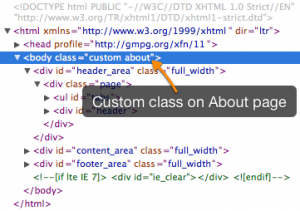
18. How can you get custom page headers and footers?
· 9. Here's an option using the titlesec package: I've used the general format of the titleformat command: % from the titlesec package %\titleformat { command } % [ shape ] % { format } { label } { sep } { before-code } [ after-code ] You can find more information by studying the documentation, and by viewing other similar questions on this site There are two files within the /thesis/custom folder which can be used for your specific customizations: blogger.com and blogger.com Let’s focus on blogger.com for the time being. While advanced users may find it easiest to edit blogger.com with a server-side file editor, such as those available in a command-line interface, the rest of us will be editing the custom · You can either add the built-in headers from Microsoft Word or customize them as per your requirements. 1. To start, open your Word document and click on the Insert tab. 2. Next, click on the Header option to either add a header or edit it. Here you’ll also see the built-in headers provided by Microsoft Word. 3

Helpful Resources
There are two files within the /thesis/custom folder which can be used for your specific customizations: blogger.com and blogger.com Let’s focus on blogger.com for the time being. While advanced users may find it easiest to edit blogger.com with a server-side file editor, such as those available in a command-line interface, the rest of us will be editing the custom · Usually, the header of a page layout contains the page number and the title of the current chapter or section (varying on odd/even pages). Usually, the chapter heading is designed in such a manner that it is open to the top. In this case, using a header on the first page on a chapter is bad for two reasons: It breaks the layout of the chapter heading · Line 1 is where and how you add your own custom banner image to the header area in Thesis. The second and third line do this: Both #logo and #tagline are “div” id tags governing the name of your blog and the tagline of same. If you want, you can exclude these two lines of CSS code

How to Customize the Header
· Line 1 is where and how you add your own custom banner image to the header area in Thesis. The second and third line do this: Both #logo and #tagline are “div” id tags governing the name of your blog and the tagline of same. If you want, you can exclude these two lines of CSS code %% We will completely define our own header strings, so switch the fancy %% headers on, but nuke all the default values. (Note that this package %% *has* to load after the geometry package!) \usepackage{fancyhdr} \pagestyle{fancy} \fancyhf{} %% Now begin customising things. See the fancyhdr docs for more info · Adding a header graphic to your thesis installation is now a simple 3 step process. Step 1. Create a header graphic to be used on your site. You can buy your header graphic via this site on the “ buy a logo ” page. We have reasonable prices! Step 2. Go to your Thesis menu in your WordPress Dashboard and click on “Header Image”
Adding A Custom Header Graphic To Thesis 1.8
· 9. Here's an option using the titlesec package: I've used the general format of the titleformat command: % from the titlesec package %\titleformat { command } % [ shape ] % { format } { label } { sep } { before-code } [ after-code ] You can find more information by studying the documentation, and by viewing other similar questions on this site %% We will completely define our own header strings, so switch the fancy %% headers on, but nuke all the default values. (Note that this package %% *has* to load after the geometry package!) \usepackage{fancyhdr} \pagestyle{fancy} \fancyhf{} %% Now begin customising things. See the fancyhdr docs for more info · Adding a header graphic to your thesis installation is now a simple 3 step process. Step 1. Create a header graphic to be used on your site. You can buy your header graphic via this site on the “ buy a logo ” page. We have reasonable prices! Step 2. Go to your Thesis menu in your WordPress Dashboard and click on “Header Image”

How to Insert a Header in Microsoft Word
· The image is much wider than the design would ever require ( pixels), but we do that just in case. This image is for the background of the header ID, which is defined blogger.com #header { position: relative; height: px; padding: 0; border:none; margin: 0 0 1em 0; background: url(images/blogger.com) % % no-repeat; }Reviews: 14 %% We will completely define our own header strings, so switch the fancy %% headers on, but nuke all the default values. (Note that this package %% *has* to load after the geometry package!) \usepackage{fancyhdr} \pagestyle{fancy} \fancyhf{} %% Now begin customising things. See the fancyhdr docs for more info · Usually, the header of a page layout contains the page number and the title of the current chapter or section (varying on odd/even pages). Usually, the chapter heading is designed in such a manner that it is open to the top. In this case, using a header on the first page on a chapter is bad for two reasons: It breaks the layout of the chapter heading
No comments:
Post a Comment